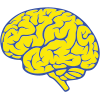NPJ Digit Med. 2025 Feb 27;8(1):127. doi: 10.1038/s41746-025-01523-3.
ABSTRACT
Electroconvulsive therapy (ECT) and ketamine are effective treatments for depression; however, evidence-based guidelines are needed to inform individual treatment selection. We adapted the Personalized Advantage Index (PAI) using machine learning to predict optimal treatment assignment to ECT or ketamine using EHR data on 2506 ECT and 196 ketamine patients. Depressive symptoms were evaluated using the Quick Inventory of Depressive Symptomatology (QIDS) before and during acute treatment. Propensity score matching across treatments was used to address confounding by indication, yielding a sample of 392 patients (n = 196 per treatment). Models predicted differential minimum QIDS scores (min-QIDS) over acute treatment using pretreatment EHR measures and SHAP values identified prescriptive predictors. Patients with large PAI scores who received a predicted optimal had significantly lower min-QIDS compared to the non-optimal treatment group (mean difference = 1.19 [95% CI: 0.32, ∞], t = 2.25, q < 0.05, d = 0.26). Our model identified candidate pretreatment factors to provide actionable, effective antidepressant treatment selection guidelines.
PMID:40016503 | DOI:10.1038/s41746-025-01523-3

Recent Comments